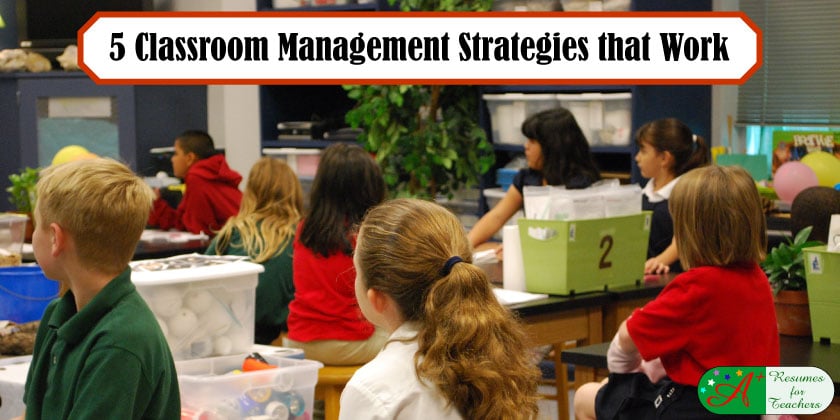Are you looking for classroom management strategies? We have a few simple but effective ideas for you.
As I am sure you know, teachers with excellent classroom management plans don’t resort to raising their voice or losing their cool. If you would like some strategies to control the classroom without resorting to losing your sanity, here are some quick classroom management strategies to help you regain control of your class without being frustrated.
1. Pack Your Lessons with Engaging Activities
If you plan a variety of activities, your students will get engaged with your lessons, and if you get them continually involved in new material, they will stay engaged long-term. Don’t lecture for the whole period, especially with a noisy group of students.
Actively involve your students in the lesson by planning hands-on activities that keep them busy and productive. If you can engage students actively in the classroom experience, you will positively respond to them because they have an outlet for their energy.
2. Create an Atmosphere that is Open and Positive
Set up the type of environment you want from the first day and always keep high expectations. Building an excellent environment for your students means showing a commitment to being fair, consistent, and firm. You will be able to create an atmosphere that is open and positive.
First, if you are not consistent every day, you will lose credibility with your students, and the atmosphere you are trying to create will quickly disintegrate. Fairness goes hand-in-hand with consistency.
A critical classroom management strategy is consistency. If your lack of consistency causes your students to perceive you are unfair, they will lose your trust in you. Trust is paramount for a productive academic classroom. You will lose out on opportunities to foster student learning.
Help your students understand what you say is what you mean and help them see you believe in their abilities. Show them this by giving them your full attention and reinforce it by praising authentic achievements.
3. Classroom Management Includes Open Communication Lines
The teacher-student relationship is a critical factor in ensuring a productive, positive, and well-behaved classroom environment. It doesn’t matter how many effective teaching practices and useful behavior strategies you have in your toolbox; if you don’t have positive relationships with your students, your efforts will eventually become unstuck.
Once you get to know each of your students, you will know how to reach them individually, teach to their learning styles, their triggers for possible bad behaviors, as well as their strengths and weaknesses. It will open doors to a whole new world of cooperation, communication, fun, and mutual respect. Understanding your students is valuable information for creating a harmonious and well-performing classroom.
4. Move Around the Room While Teaching
When you are teaching, try not to be stagnant at the front of the room. By moving around the room, students at the back of the room will be more apt to pay attention, preventing students from talking and misbehaving during your lesson.
Walking around the room gives a subtle but powerful message you are in control of the whole room. Walking over to a specific section of the room where students are chatting and teaching effectively stops the chatter without even saying anything.
5. Remove Disruptive Students From the Environment
If you have tried steps 1-4 and a student is still disruptive, take the guilty party outside of the classroom. Ask them what’s wrong, and you may find out the real cause behind their acting out. If they are still unresponsive or defiant, send them to the principal’s office as a last resort.
There are many effective classroom management strategies you can use. But, remember your students need to be actively involved in lessons. Acting out tends to come from boredom, so don’t give them reasons to feel bored. Keep them engaged to keep them learning and build relationships based on trust and consistency. Your classroom will be a great place to learn!


